ISSN ONLINE(2278-8875) PRINT (2320-3765)
ISSN ONLINE(2278-8875) PRINT (2320-3765)
T.Swetha1 and L.Anju2
|
| Related article at Pubmed, Scholar Google |
Visit for more related articles at International Journal of Advanced Research in Electrical, Electronics and Instrumentation Engineering
In recent years, the development and demand of multimedia product grows progressively fast, contributing to inadequate bandwidth of network and memory storage for device. Therefore, the term called compression becomes more and more significant. There are many image compression methods which compress the image as a whole and not considering the device storage and resources. Therefore, content aware image compression with low computational complexity is a bottleneck problem in the field of facility limited multimedia devices. The image coding method which already exists cannot support content-based high compression. In this paper, the image resizing technique, seam carving is combined with SPIHT. Block-based seam is generated on each input image and then carved out, which results a retargeted image, but the resultant output does not have good picture quality. To improve the picture quality of the image a simple linear resize operation is done. Then a multilevel discrete wavelet transform (DWT) is performed on the improved retargeted output and then Discrete Cosine Transform is combined with DWT as hybrid transforms to achieve better compression. The SPIHT coding technique is applied to transformed image, which results in a series of bit stream. As a result, an image can be recreated with arbitrary aspect ratio in a content-aware manner, with the help of the side information of seam energy map.
Keywords |
| Seam Carving, Discrete Wavelet Transform (DWT), Discrete Cosine Transform (DCT), Set Partitioning in Hierarchical Tree (SPIHT), Image Compression. |
INTRODUCTION |
| There are various display devices like mobile phone, PDA’s, laptop, etc. Each and every display devices varies with its arbitrary ratio. So that the size of the image also varies, as the results quality of the image becomes poor. The ultimate aim is to preserve the quality of the image from one display device to another. One solution to this problem is to resize and compress the content aware information.Image compression is an application of data compression that encodes the original image with few bits. The main goal of such system is to reduce the storage quantity as much as possible. |
| An inverse process called decompression (decoding) is applied to the compressed data to get the reconstructed image. The objective of compression is to reduce the number of bits as much as possible, while keeping the resolution and the visual quality of the reconstructed image as close to the original image. |
| In this paper, based on Region of Interest (ROI) concept image is resized with the technique called seam carving. The process of seam carving is done by generating a block based seam path which is a connected path of low energy pixel value and after the seam path is found it will be carved out from that corresponding image. The seam carved image is given to the multilevel discrete wavelet transform (DWT). Then DCT is applied for wavelet coefficients, finally the output of DCT image will be incorporated with a wavelet codec called SPIHT. Their compression efficiency for e.g. on image compression is widely acknowledged. The already used JPEG2000 standard will be based on wavelet transforms too. The well known algorithm of Pearlman Set Partitioning In Hierarchical Trees (SPIHT) is to restrict the necessity of random access to the whole image to a small sub images only. The main idea is based on partitioning of sets, which consists of coefficients or representatives of whole sub trees. The decoder duplicates the execution path of the encoder to ensure this behavior; the coder sends the result of a binary decision to the decoder before a branch is taken in the algorithm. Thus, all decisions of the decoder are based on the received bits. The name of the algorithm is composed of the words set and partitioning. |
| The compression performance is measured with peak signal to noise ratio and Mean Square Error (MSE) and the Peak Signal to Noise Ratio (PSNR), which are defined as below, |
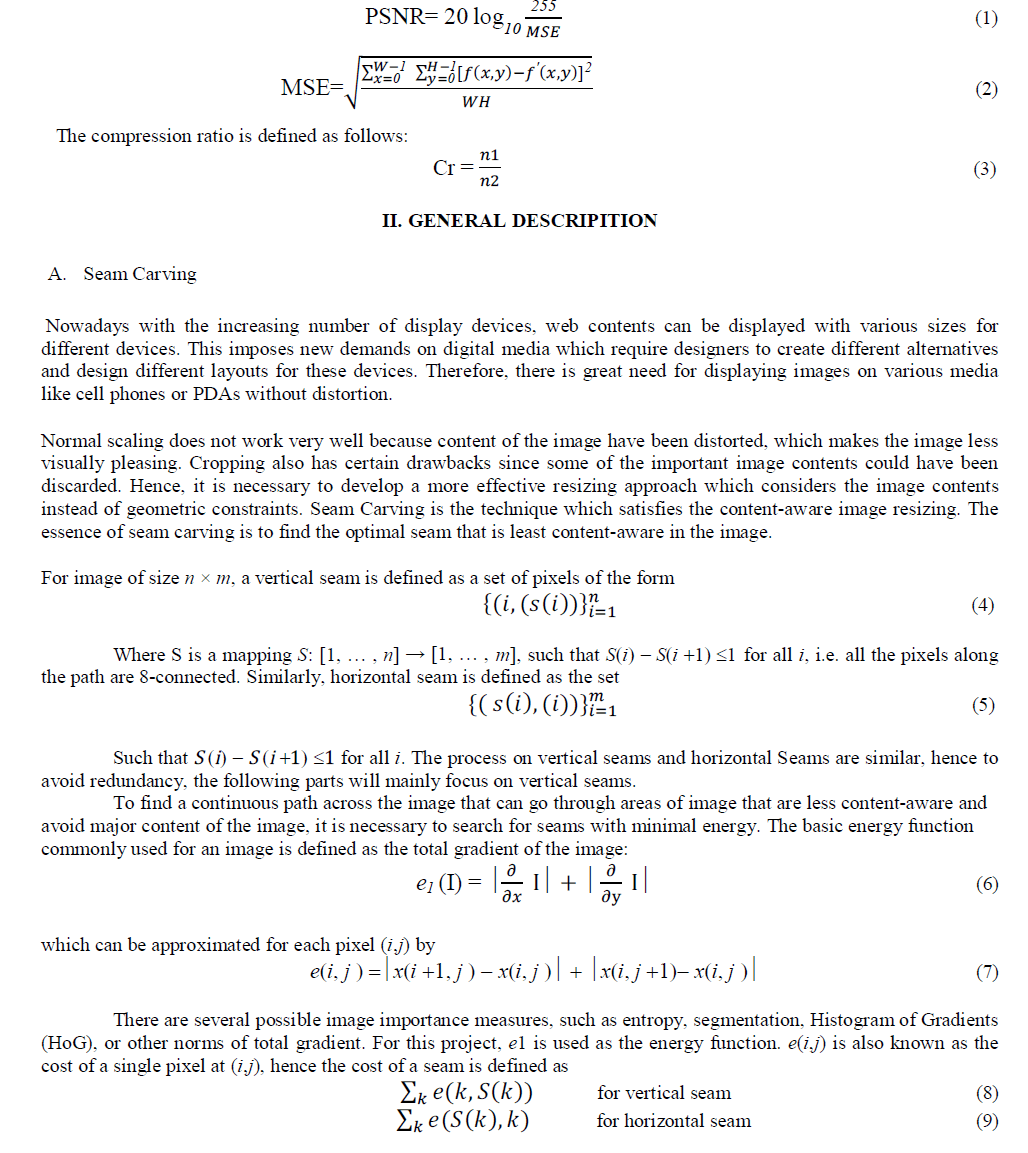 |
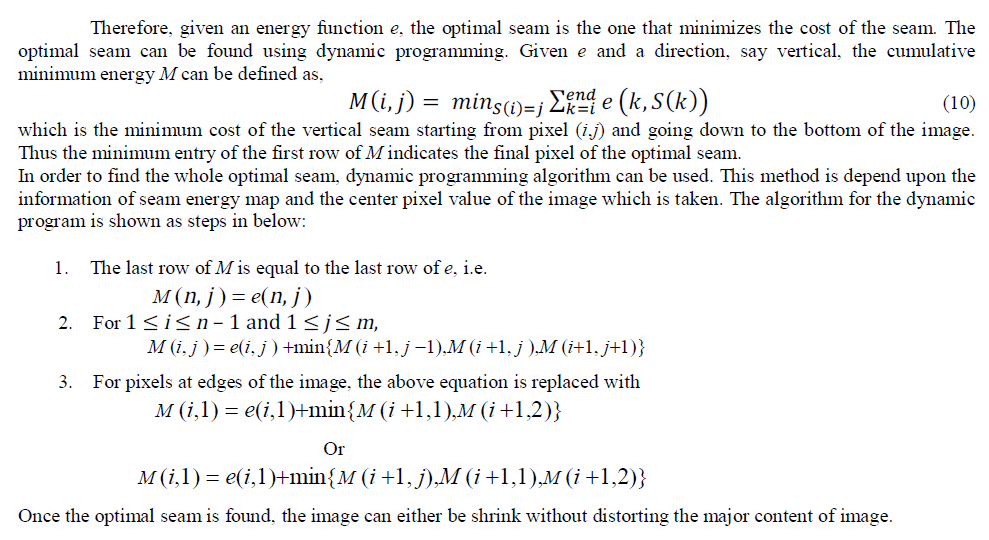 |
| B. DWT-DCT Hybrid Compression Technique |
| Wavelet Transform has become an important method for image compression. Wavelet based coding provides substantial improvement in picture quality at high compression ratios mainly due to better energy compaction property of wavelet transforms. Wavelet transform partitions a signal into a set of functions called wavelets. Wavelets are obtained from a single prototype wavelet called mother wavelet by dilations and shifting. The wavelet transform is computed separately for different segments of the time-domain signal at different frequencies. |
| For compression purpose, higher capability of compressing information in fewer coefficients, the better the transform; for that reason, the Discrete Cosine Transform (DCT) and Discrete Wavelet Transform (DWT) have become the most widely used transform coding techniques. Transform coding algorithms usually start by partitioning the original image into subimages (blocks) of small size (usually 8 × 8). For each block the transform coefficients are calculated, effectively converting the original 8 × 8 array of pixel values into an array of coefficients within which the coefficients closer to the top-left corner usually contain most of the information needed to quantize and encode (and eventually perform the reverse process at the decoder’s side) the image with little perceptual distortion. The resulting coefficients are then quantized and the output of the quantizer is used by symbol encoding techniques to produce the output bitstream representing the encoded image. In image decompression model at the decoder’s side, the reverse process takes place, with the obvious difference that the dequantization stage will only generate an approximated version of the original coefficient values e.g., whatever loss was introduced by the quantizer in the encoder stage is not reversible. |
| C. Set Partitioning In Hierarchical Tree |
| SPIHT was designed for optimal progressive transmission, as well as for compression. One of the important features of SPIHT (perhaps a unique feature) is that at any point during the decoding of an image, the quality of the displayed image is the best that can be achieved for the number of bits input by the decoder up to that moment. Another important SPIHT feature is its use of embedded coding. |
| It is important to have the encoder and decoder test sets for significance in the same way, so the coding algorithm uses three lists called list of significant pixels (LSP), list of insignificant pixels (LIP), and list of insignificant sets (LIS). |
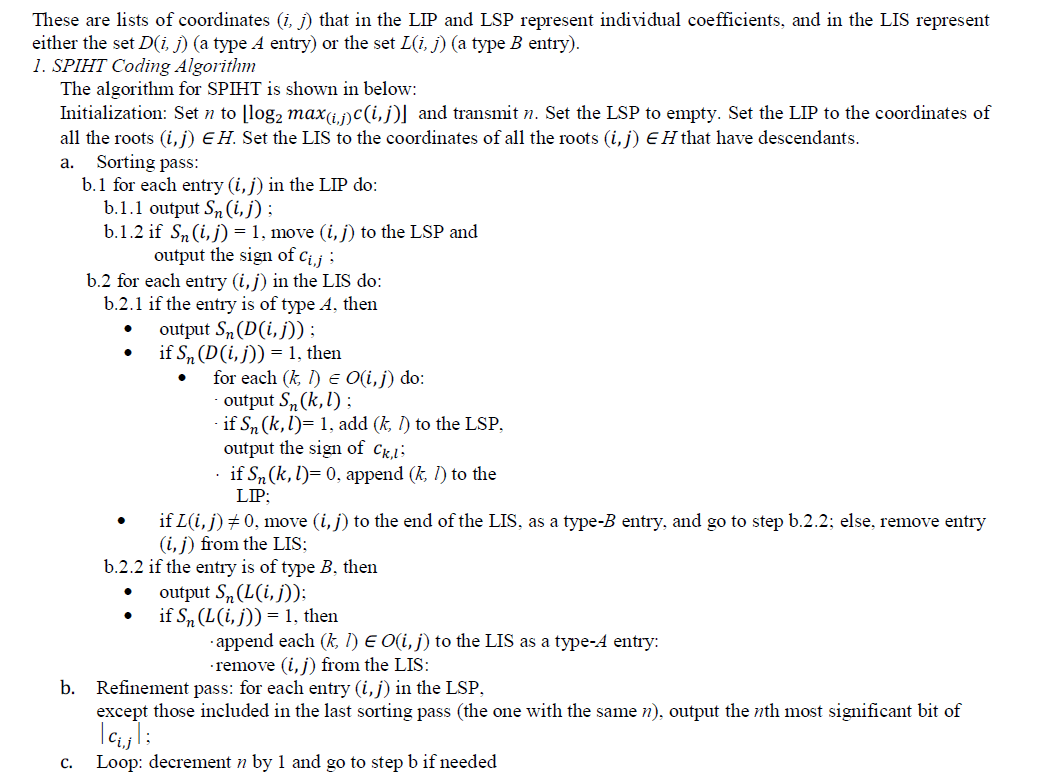 |
METHODOLOGY |
| In order to obtain an efficient compression of an image with less computational complexity, the retargeting technique with an effective compression technique, like SPIHT is required. There are mainly two parts; one is the image resizing part and another one is compression part. For the resizing part, an image is taken and energy for the image is calculated. From this method, ROI and non-ROI region can be known. With the help of the energy map function and by using dynamic programming technique the path to connect low energy pixels are detected. These processes are applicable for both horizontal and vertical manner. After the seam path is found in both horizontal and vertical manner, it will be carved out and rejoined in the image. This process will continue until the required arbitrary resolution is obtained. As the result of these processes image quality is not good. To improve the picture quality, from the beginning point, a simple linear resizing operation has to be performed. If the original size of image is 500×500 and it is targeted to the size 200×200, it has to be first resized to 300×300. This is because the image fills the entire width and the heights. Then use the seam carving to retarget the image. |
| As for the second part, on compression side, the retargeted image is given as input to Discrete Wavelet Transform (DWT) is combined with Discrete Cosine Transform and results DCT coefficient. The resulted coefficients are given as input for the SPIHT encoding process which gives a series of bit streams. At the decoder side, with the help of the content aware information, image can be reconstructed with less computational complexity. The block diagram of our proposed system is shown in Figure 1 below. |
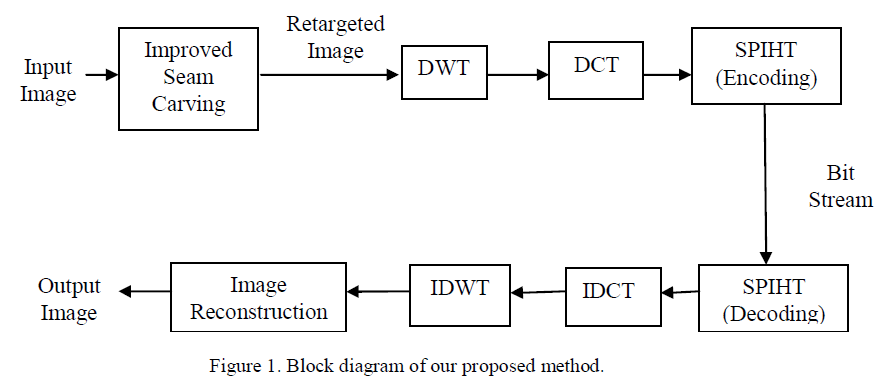 |
RESULTS AND DISCUSSIONS |
| The results of experiments conducted to perform content based color image compression and to retarget the image with optimum display size. Experiments conducted in MATLAB 7.10.0 (R2010a). Color image (shown in figure 2) of size 500 ×500 is used as input image for conducting the experiments. |
| A. Results of Seam Carving |
| The results of image retargeting seam carving technique are shown below: |
| Original image has taken with the size of 500 ×500, which is then gradient and energy is calculate for that particular image which gives the side information using seam energy map. |
 |
| The energy for the input image is calculated in both horizontal and vertical direction which is shown in the Figure 4, 5 and 6. The seam path is the connected path of low pixel values, which are generated by the dynamic programming technique. With the content of seam energy map side information and the center pixel with neighboring pixel of value of image are combined to find low pixels. This method of finding seam path will be repeated in both horizontal and vertical manner. The seam path on energy, gradient, and RGB original image is detected which is shown in the following Figure 6, 7, 8. |
 |
| After the gradient and energy seam path is generated on the image, it will be removed from that image and then all the pixels of the image are shifted left (or up) to compensate for the missing path. The visual impact is noticeable only along the path of the seam, leaving the rest of the image intact. Without resizing the retargeted image will be looks like |
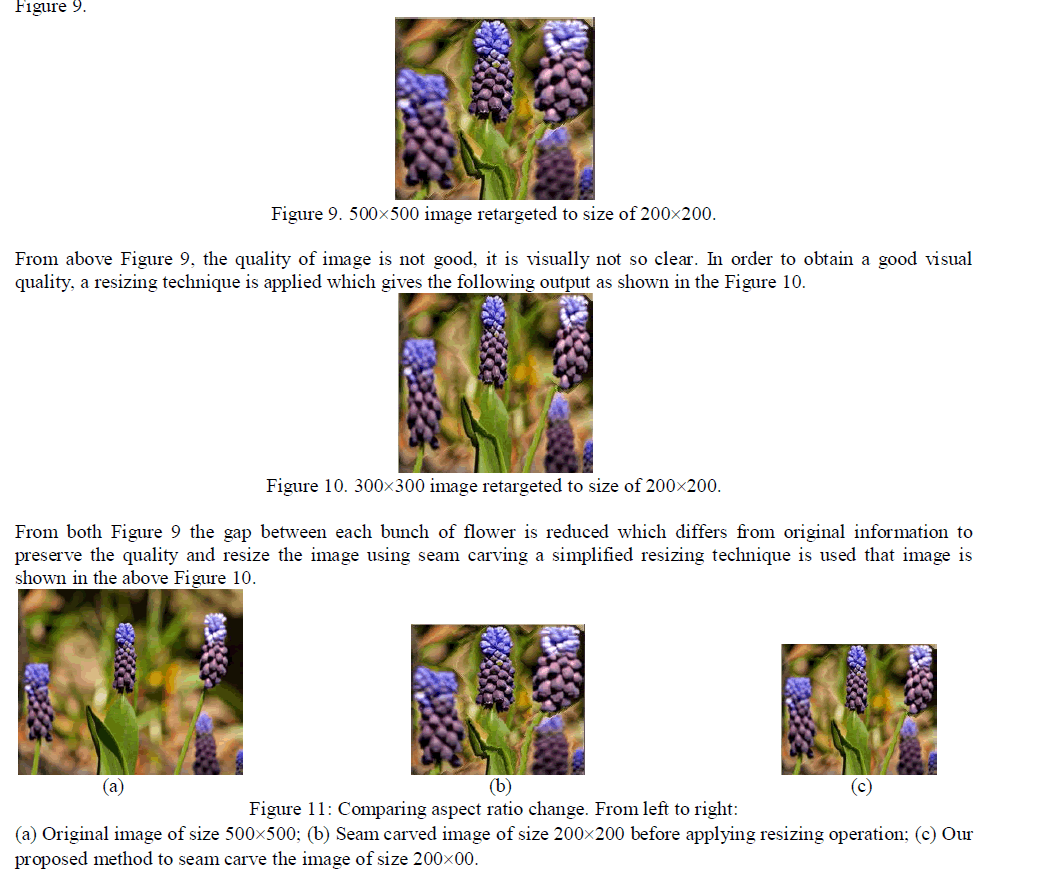 |
| B. Result of DWT-DCT-SPIHT codec |
| For the compression part the improved retargeted image is given as input to the wavelet decomposition which results in sub images shown in figure 11. DCT is applied to wavelet image which is shown in figure 13. The DCT coefficients are encoded and then decoded using a wavelet codec method called SPIHT. With the help of seam energy map side information and inverse DWT coefficient and inverse DCT values image can be reconstructed with the required arbitrary ratio without any information loss. At the receiver side images reconstructed at the receiver with resolution 200 ×200 which is shown in Figure 14. |
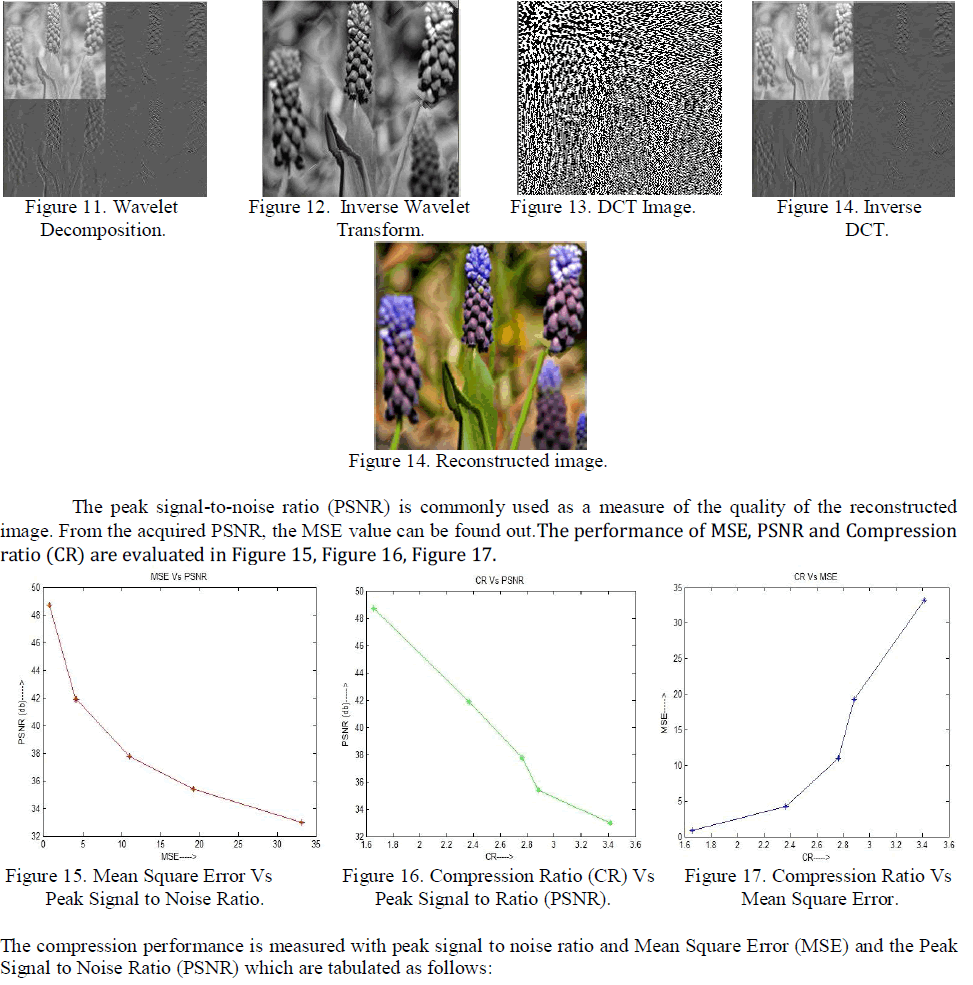 |
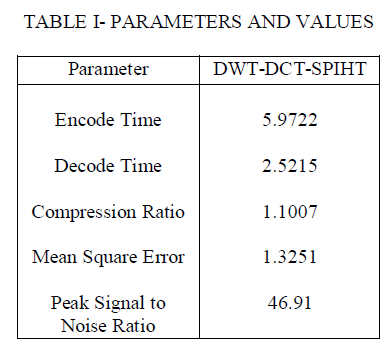 |
SUMMARY AND CONCLUSION |
| In this paper, the concept of Seam carving and the improvement which is done by using a simplified linear resizing operation is discussed and also the combination of improved seam carving and hybrid transforms can be combined together to provide better compression results for mobile multimedia devices. The performances of these combined techniques are measured by Peak Signal to Noise Ratio (PSNR) which results 46.91 dB. |
References |
|